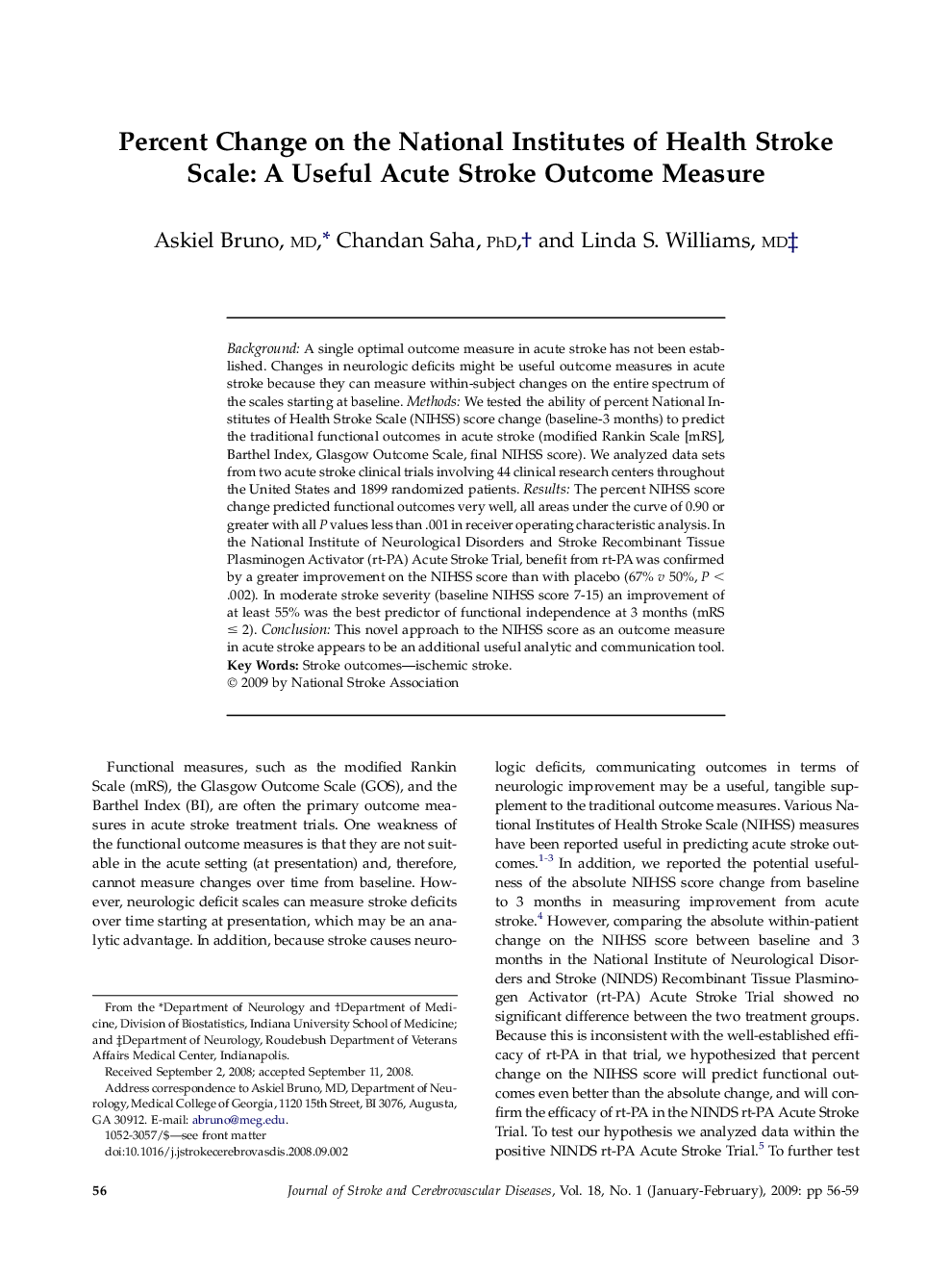| Article ID | Journal | Published Year | Pages | File Type |
|---|---|---|---|---|
| 2711773 | Journal of Stroke and Cerebrovascular Diseases | 2009 | 4 Pages |
BackgroundA single optimal outcome measure in acute stroke has not been established. Changes in neurologic deficits might be useful outcome measures in acute stroke because they can measure within-subject changes on the entire spectrum of the scales starting at baseline.MethodsWe tested the ability of percent National Institutes of Health Stroke Scale (NIHSS) score change (baseline-3 months) to predict the traditional functional outcomes in acute stroke (modified Rankin Scale [mRS], Barthel Index, Glasgow Outcome Scale, final NIHSS score). We analyzed data sets from two acute stroke clinical trials involving 44 clinical research centers throughout the United States and 1899 randomized patients.ResultsThe percent NIHSS score change predicted functional outcomes very well, all areas under the curve of 0.90 or greater with all P values less than .001 in receiver operating characteristic analysis. In the National Institute of Neurological Disorders and Stroke Recombinant Tissue Plasminogen Activator (rt-PA) Acute Stroke Trial, benefit from rt-PA was confirmed by a greater improvement on the NIHSS score than with placebo (67% v 50%, P < .002). In moderate stroke severity (baseline NIHSS score 7-15) an improvement of at least 55% was the best predictor of functional independence at 3 months (mRS ≤ 2).ConclusionThis novel approach to the NIHSS score as an outcome measure in acute stroke appears to be an additional useful analytic and communication tool.
